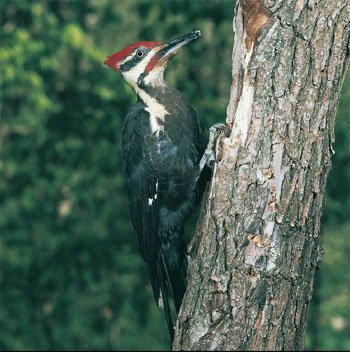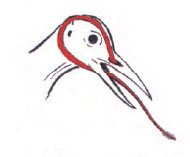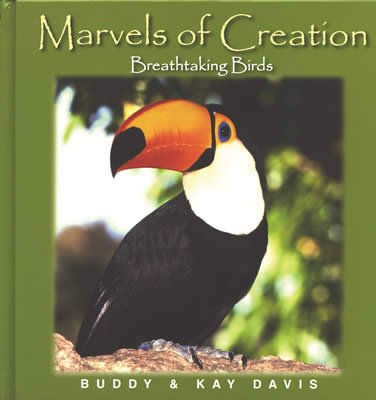Pileated Woodpecker
Excerpt from Marvels of Creation: Breathtaking Birds
by Buddy Davis and Kay Davis on May 23, 2013
The pileated woodpecker is the largest woodpecker in North America. This crow-sized woodpecker can be found in woodland areas from southern Canada and across the northern and central United States. There are 200 species of woodpeckers spread over the forests of the world except in Madagascar, Australia, and other oceanic islands.
Pileated woodpeckers prefer to live solitary lives in the deep woods of mature forests, but have had to adapt to living in forests with younger growth trees.
They are black in color with a red crest on both the male and female. The male has a red streak running from the corner of its mouth back to the crest. The beak is black and the chin white.
Woodpeckers are excellent tree climbers, having two backward facing toes, sharp claws, and stiff tail feathers, which are used as a prop while climbing. Starting at the bottom of a tree, a woodpecker goes in a spiral motion around the tree searching for insects. You can certainly hear the tapping noise as its beak strikes the tree rapidly and repeatedly.

Woodpecker tongue
The diet of the pileated woodpecker includes ants, flies, mosquitoes, moths, grubs, seeds, walnuts, and acorns. Using its pointed bill to chisel into the wood of trees, it hammers away as it searches for food. Its brain is cushioned inside the strong skull so that it is not smashed as the woodpecker drills into a tree. Because one little twist of the neck could be fatal, strong muscles hold the neck straight when hammering. God’s design of every aspect of the woodpecker is magnificent and perfect. The woodpecker certainly could not have survived any evolutionary plans that man could come up with.
When the hole is drilled, the woodpecker uses its extremely long tongue (6 inches or 2.34 cm) to reach inside to get the insects. At the end of the tongue are bristles like a brush to spear the insects. When not in use, this long tongue is wrapped along the back of the skull and inserted in the right nostril.
The nest of the pileated woodpecker is usually a triangular-shaped hole bored high in a tree. Two to eight eggs are laid and incubated by both parents for approximately 18 days. The young will leave the nest when they are 22–26 days old.
Pileated Woodpecker
Piciformes • Picidae • Dryocopus pileatus
Weight: 10–16 ounces (285.7–457.1 g)
Length: 16 inches (42 cm)
Wing Span: 27–30 inches (69.2–76.9 cm)
Life Span: 9 to 13 years
Special Design Feature: The skull, brain, and neck
muscles of the woodpecker are designed to take
the force of impact as the woodpecker hammers
into a tree trying to find a meal.
Did You Know? The woodpecker can eat up to
2,000 ants a day.
Marvels of Creation: Breathtaking Birds
This spectacular book brings the world of feathered creatures alive in a unique and colorful way.
Browse Kids Book- © 2025 Answers in Genesis
- Privacy Policy
- Contact
- About

